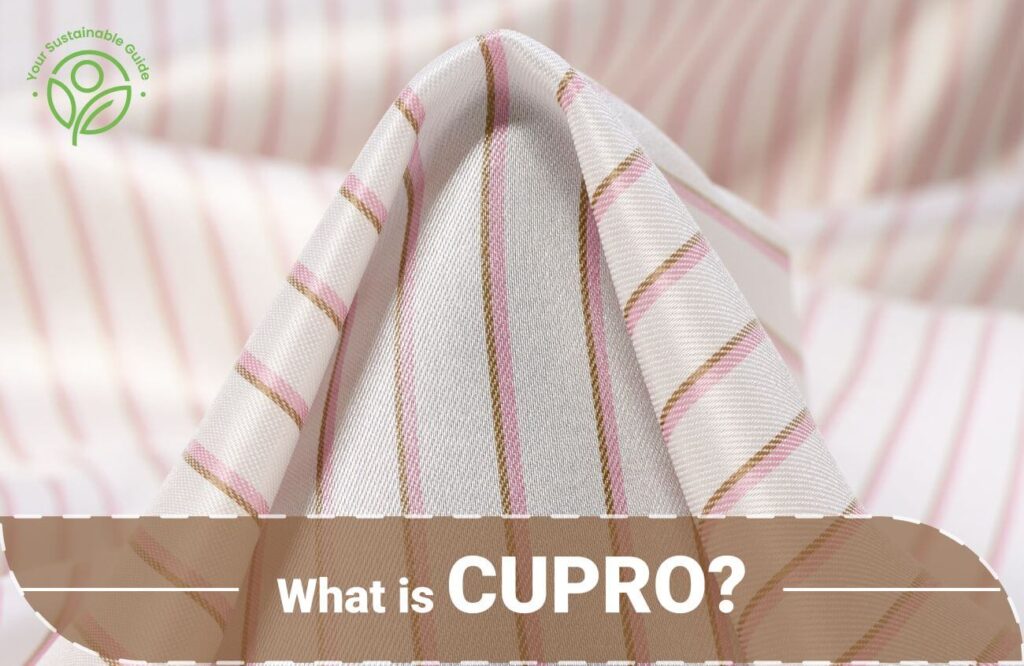The most widely used natural fiber, cotton fabric, needs no introduction. Every summer wardrobe is incomplete without the addition of this staple fabric. No other material works its magic like the light and breathable cotton that keeps us cool in the hot and humid months with its smooth and comfy touch in all seasons.
Made from cotton plants, cotton is an entirely natural fabric, the use of which dates back to as far as 5000 B.C. in Ancient India, from which it spread worldwide and soon became a closet and household essential. What’s more, cotton is also known as the ‘fabric of our lives’ because chances are fair that you’re one of those who cannot think beyond the pleasantness of this fabric and use it in your everyday life.
So, while we can go on and on with the ultimate level of comfort and benefits that this fabric provides; as mindful consumers, it is important to understand that is the cotton fabric really as sustainable as it is advertised?
What is Cotton Fabric?
Cotton is a staple and the most commonly used natural fabric that has been a part of the textile industry for ages. Cotton fabric is a plant-based fiber made from the fluffy strands surrounding the seeds of cotton plants, which upon maturation, emerges as a white, round, and fuzzy formation. It is an extremely comfortable fabric that is breathable, lightweight, cool, and durable in nature.
Cotton comes from the Arabic word ‘Quton.’ Historical evidence found in the Mehrgarh and Rakhigarhi sites in India, dating back to 5000 BC, prove the use of cotton fabric in various textiles. Later on, from 3300 to 1300 BC, cotton cultivation flourished during the Indus Valley Civilization and became a prime source of clothing and textile use in the Indian Subcontinent.

Cotton cultivation was widespread in Iran and Arabia and made its way to Europe in the late Middle Ages. Cotton fabric production was introduced to the Europeans by the Islamic conquest of the Iberian Peninsula, after which the European countries soon became significant producers and exporters of cotton along with countries like India and Egypt.
From the earliest days of cotton cultivation, this fabric has been cherished for its incredibly soft and snug texture, along with its amazing heat retention and breathability attributes. In addition, cotton has high tensile strength and is more durable than silk fabric.
Cotton fabric is one of the most highly-produced textiles in the world. According to the World Wildlife Fund (WWF), about 250 million people worldwide earn their livelihood through cotton production. At present, India is the largest producer of cotton, followed by China and the US.
How is Cotton Fabric Made?
Cotton production is a labor-intensive process. The production process starts with planting cotton seeds in the spring, after which tiny seedlings emerge within an estimated 7-8 days, the plants are then left to grow at their fullest, and mature cotton bolls occur within 50 to 80 days.
The matured cotton plants are then harvested manually or through an automated machine, followed by the process of defoliation, where full-bloom cotton seeds are separated from the plants and leaves. The machine used for harvesting and defoliation is also used to remove all types of contaminants from the cotton fibers, after which they are formed into bales.
Next, the fuzzy cotton seed fiber is extracted from the hard protective encasing known as the boll. In the early days, this process was done by hand, but these days, automated machines known as ‘cotton gins’ are used to separate the cotton seeds from the bolls. The gins not only remove the cotton fibers from the bolls but also clean and fluff them, separating the seeds, dirt, and lint.
The raw cotton is then compressed and stored, ready to be transported to textile mills where they are carded (brushed through to get long strands) and spun into yarn. The basic cotton thread is now ready to go through required chemical treatments and dyes in order to be woven into particular textiles like denims, tops, bedsheets, shirts, etc.
Is Cotton Fabric Sustainable?
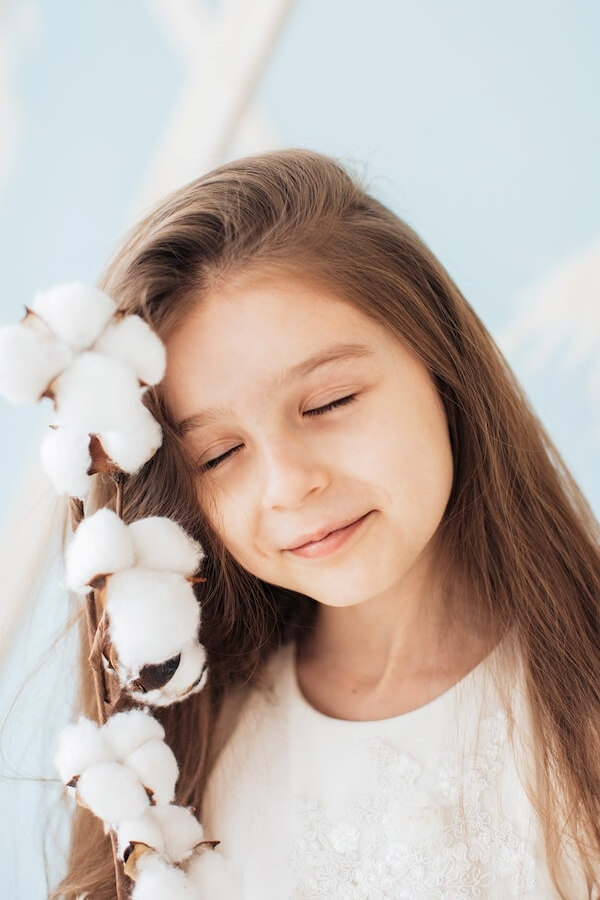
Cotton is a thirsty plant. It is primarily grown in dry conditions because of which cotton cultivation requires a massive amount of water. This means cotton grown yearly not only consumes large volumes of water emptying nearby natural water resources like lakes, rivers, and springs but also contributes to drying up sea basins.
Land used for cotton cultivation isn’t properly cared for because the primary motive of most cotton farmers remains to produce the maximum amount of cotton fibers quickly at the lowest possible cost. Agrochemicals like fertilizers and pesticides are heavily used by cotton producers to get the most of cotton yields. These toxic chemicals not only pollute the soil but also poison the surrounding water bodies. Therefore, in the areas where cotton is grown, the soil and water channels get frequently depleted as a consequence of cotton cultivation.
In most cases, cotton cultivation is often exploitative, with multinational corporations exploiting poor, uneducated people in third-world countries. In 2015, India reported the deaths of 12,500 cotton farmers by suicide because most of the poor farmers are stuck in a web of debt for constantly buying GMO or BT cotton seeds to harvest a yield of cotton as their livelihood.
So, while cotton is a natural plant-based fabric that is fully biodegradable, it is not sustainable because it significantly impacts the planet and people. However, organic cotton which is produced abiding by all the sustainable criteria is completely sustainable and is widely used by brands that advocate slow and sustainable fashion.
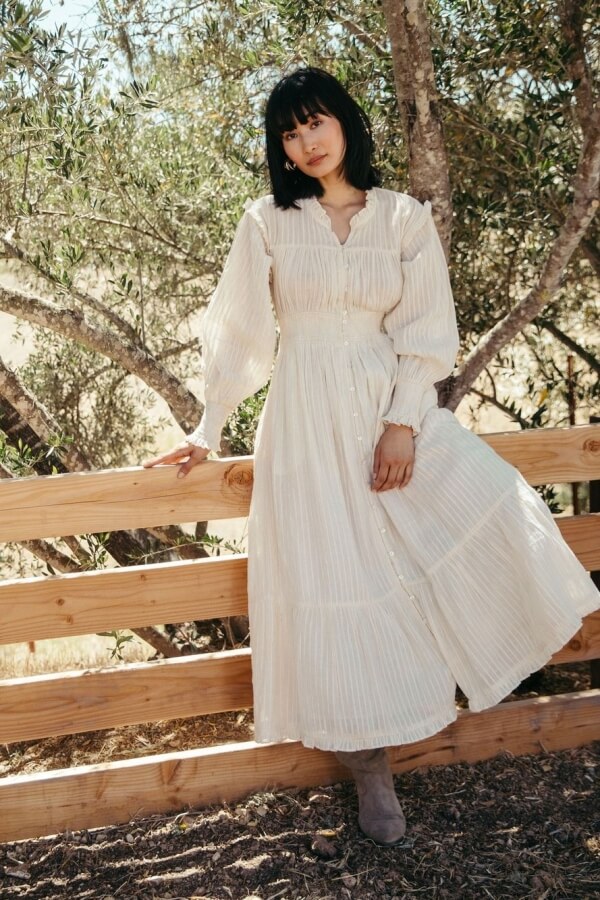
Is Cotton Fabric Affordable?
Conventional cotton remains to be the highest-produced natural fabric in the world, and because of this, it has become fairly affordable. However, organic and certified cotton remains to be expensive because a lot of sustainable measures are kept in mind while producing these, making organic cotton limited in supply.
Again if compared to linen which has similar properties to cotton, both conventional and organic cotton products are affordable.
Cotton Fabric Certifications
Certifications, Accreditations, and Standards by recognized third-party organizations are essential because they are a sign of reassurance to the consumer that a company is actually doing what they claim, for a sustainable foot front. Some certifications you can check for organic cotton are as follows:
- Global Organic Textile Standard (GOTS)
- European Union’s Organic Standards Organization
- United States Department of Agriculture (USDA)
- Fairtrade Cotton
- Global Recycle Standard (GRS)
- OEKO TEK
- Organic Content Standard (OCS)
Properties of Cotton Fabric
- Cotton is fully biodegradable.
- It has great absorbency attributes.
- It is exceptionally breathable and lightweight, making it perfect for hot summers.
- Cotton has great tensile strength making it quite durable.
- It is hypoallergenic, hence it suits all skin types.
- It has high moisture-wicking properties.
- Cotton gets stronger when wet.
- It is non-toxic in nature.
- Cotton is anti-static.
- It is extremely soft and comfortable.
- Cotton responds well to dyes.
- It can be blended with almost all types of fabrics.
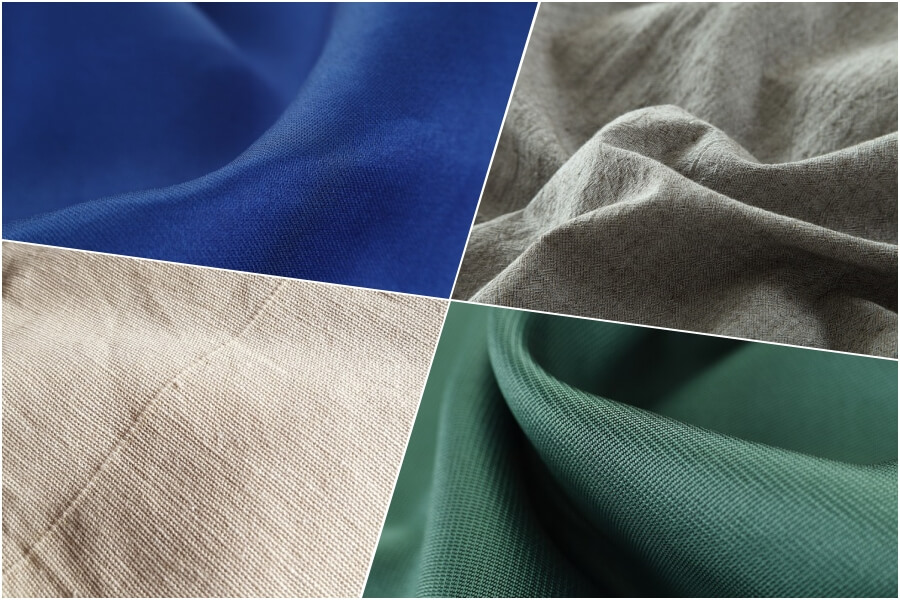
Pros & Cons of Cotton Fabric
Pros of Cotton Fabric:
- Cotton is 100% biodegradable.
- It has high breathability.
- It has good absorbency qualities.
- Cotton is very soft and gentle on the skin.
- It does not have static cling.
- Cotton has a cooling factor which helps to stay comfortable during warmer months.
- It is anti-allergic and suits even the most sensitive skin type people.
- Cotton is affordable.
- It has good draping abilities.
- Cotton holds dye well.
Cons of Cotton Fabric:
- Cotton fabric is prone to pilling.
- Cotton can wrinkle easily.
- Most dyed cotton products always bleed in the first and second wash.
- It is prone to shrinking when washed for the first time.
- Cotton can get stained easily.
- Conventional cotton, which comprises most of the world’s cotton production is not sustainable.
- The cotton industry is exploitative.
Uses of Cotton Fabric

A significant portion of the world’s clothing products consists of some amount of cotton since it is the most widely used fabric and can be blended with multiple fabrics. Apparel like t-shirts, denims, dresses, tops, shirts, trousers, sarees, blouses, blazers, formal suits, business wear, innerwear, etc. almost every type of clothing can be made from cotton.
Cotton is also popular in making home textiles like bedsheets, pillowcases, duvets, blankets, mattress toppers and mattress fillers, cushion covers, doormats, rugs, etc.
Bathing textiles that use cotton are bath robes, towels, bathmats, hand towels, etc.
Cotton is also used in making medical supplies like bandages, gauges, sterile cotton rolls, etc., and also in industrial threads, and tarps.
Types of Cotton Fabrics
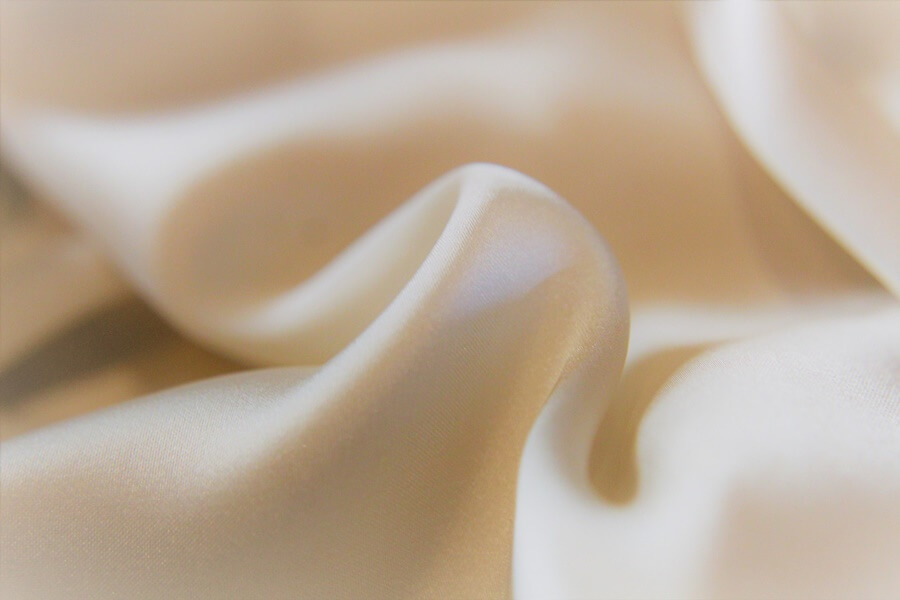
- Pima Cotton- Pima cotton is organically grown in Peru. It is one of the most luxurious variety of cotton fabrics renowned for its softness, durability, and long silky fibers. It falls under the category of Extra-long staple cotton.
- Supima Cotton- Supima cotton is another exclusive variety of organic cotton in the US. Less than 1% of the world’s cotton comprises of supima cotton. It is regarded for its extra-long staple fibers, softness, strength, and color-retention attributes.
- Egyptian Cotton- Egyptian cotton is a superior quality cotton grown under specific weather conditions in the nutrition-rich soil of the Nile Delta in Egypt. It is most admired for its extra-long staple fibers and luxurious feel. Egyptian cotton falls within the Long staple and Extra-long staple cotton categories.
- Long staple Cotton- This type of cotton has superior quality long silky fibers, which is soft and exceptionally durable. Long-staple cotton is mainly used in making bedding products for its strength. Its length remains between 1.125 and 1.25 inches.
- Extra-long staple Cotton- This cotton variety is the best of all types of cotton because of its extra-long staple fibers that exceed 1.25 inches. Supima cotton and Egyptian cotton are all types of extra-long staple cotton.
- Short-staple Cotton- This type of cotton has shorter fibers that remain within 1.125 inches, and is comparatively less soft than long staple and extra-long staple cotton. It is great for making everyday clothing items.
What is GOTS Certified Organic Cotton?
Global Organic Textile Standard (GOTS) is an internationally recognized textile standard. GOTS certifies those organic cotton along with some other accreditated organic cotton that are produced in a sustainable manner. These consume less water and are grown without the use of harmful chemical fertilizers, pesticides, and GMO seeds, hence it is not only healthier for the farmers involved in cotton farming but also more eco-friendly. See! Now you don’t have to give up on your favorite cotton fabric but just upgrade to a better and organic version.
How to Care for Cotton Fabric
- Before washing your cotton items, always pretreat stains, if any.
- Wash light-colored items and dark-colored cotton items separately to prevent bleeding. It is recommended to always wash darker colors in cold water. However, lighter shades can be cleaned in both cool and warm cycles.
- Cotton can be bleached.
- Since cotton tends to shrink when washed for the first time, always make sure to pre-wash your fabric before stitching it into a clothing or home textile item.
- Cotton can be easily tumble-dried or hung to air-dry. As cotton shrinks and gets wrinkled easily, line-dry after jerking out excess water to avoid high shrinkage, and remove them from the dryer quickly to prevent extra wrinkles.
- Always press your cotton when damp, keeping the iron in a cotton setting.
Famous Brands That Use Cotton Fabric
- Pact
- MATE The Label
- Organic Basics
- For Days
- Harvest & Mill
- Made Trade
- Outerknown
- Cleobella
- Back Beat Co.
- Thought
- AMOUR VERT
- Brooks Brothers
- Fair Indigo
- Kowtow
- Patagonia
Best Alternatives to Cotton Fabric
Linen – Made from flax plants, linen is the most eco-conscious of all natural fabrics. All cotton lovers would absolutely love linen because it has similar properties to cotton but is just better because of some added advantages. However, it is quite expensive because the supply of linen is fairly limited as linen production is a strenuous process.
Organic Hemp – Organic hemp is another sustainable fiber that is made from the plant Cannabis Sativa. It is one of the fastest growing plants with the requirement of minimal resources and the best thing is, almost the whole of the plant is used for various industrial and medicinal purposes, so there’s no wastage. Organic hemp too possesses some major attributes of cotton making it a perfect alternative.
Conclusion
While we all love the touch and feel of cotton, it can’t be denied that the traditional cotton industry has turned into a major topic of concern for human rights and environmental organizations. The good news! Along wih other innovative sustainable fabrics, demand for sustainable and organic cotton is growing rapidly. This has led more and more brands like Burberry, H&M, Adidas, etc. to ditch the cheap conventional cotton and embrace organic certified cotton in their products.
Blockchain technology is one of these new technologies that can support a more ethical and sustainable fashion industry. In addition, an increasing number of solutions are emerging to assist businesses in tracing cotton. As conscious consumers, our duty is to stay away from cheap cotton and only indulge in certified cotton to make the planet a better place.



